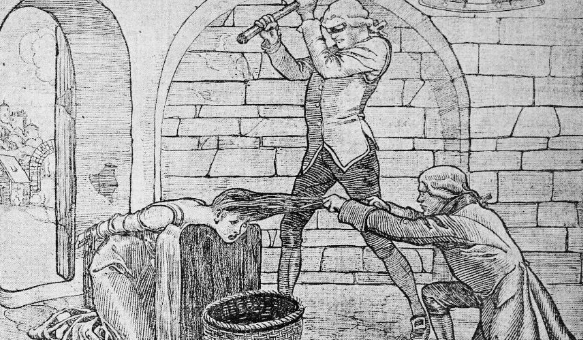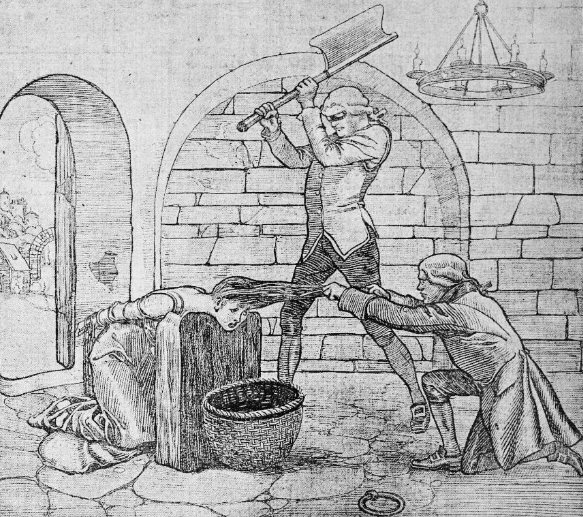
The gory details of the executions were never published in the German press and it was illegal in Germany to take photographs of executioners. For this reason, I was unable to uncover any authentic pictures of the axe and block executions that took place in the early 1900s, Germany. Instead, I am using a few illustrations and execution announcements for this video.
According to American newspapers, all that was usually printed about an execution in the German press amounted to about two to four lines that merely stated who was executed and where. The executions were not open to the public like they were in France, and usually only a select group of officials, newspapermen, and VIPs were allowed to witness the beheadings.
The executions usually took place between sunset and sunrise in order to prevent a crowd from gathering around the prison.

In one case it was reported that a local butcher was hired to perform two executions because he was already skilled with using an axe and cleaver to chop up the bodies of animals. He was instructed to wear evening dress, or a suit made of black material. To prevent any of the execution witnesses from recognizing him, he wore a black mask over his face.
In spite of the lack of public witnesses to Germany’s executions, some of those who witnessed the events did speak about them. The details were often gory, such as the following account published in 1914:
“In German beheadings, the condemned has little opportunity to see anything of his executioner or of the means employed. In Berlin the executions take place in the courtyard of the penitentiary. A large flat flagstone, on which the headsman stands in order to have a firm footing, marks the spot. When the hour arrives warders enter the cell of the condemned man and quickly cut away the collar of his shirt, in oder to leave the neck bare. He is led outside. As he enters the courtyard through a small door he is quickly wheeled about, so that his back is toward the fatal spot, and faces two officials, who read to him that the sentence of the law is about to be executed.
“Immediately and quickly he is seized by two strong warders, who half carry, half drag him backward several yards to the block. This latter, at least in Berlin, differs from the old English headsman’s block. Instead of being forced to kneel down in front of it, the condemned man is thrown face down on a long, heavy log, a bench-like block to which he is strapped. His chin and head fit into a semicircular hole in the end of the block. The headsman, immaculately clad in black evening suit, who until now has been invisible, suddenly steps forward with a huge ax in his hands. He does not swing the ax to his shoulders with wood chopping motion – the ax is almost too heavy for that – but walks quickly to the victim, poises the instrument for a moment about two and a half feet above the end of the log block and with unerring aim drops it upon the neck. It is over. The ax is of such razor like sharpness and is so heavy that its edge sinks deep into the log block with a crunching sound. The execution consumes less time than is necessary to read this description of it.”
Of course, the Germans did not always decapitate the condemned with an axe. Sometimes it was with a heavy sword. Most of these sword executions happened without any technical problems.
However, one account of a brutal sword execution that sounds like something from out of Game of Thrones was published in 1872. It reads:
“The American hangman has been somewhat surpassed in the business of killing for pay. A German executioner has surpassed him.
“Three men were to be decapitated. They were so prostrated with fright that they were given stimulants in order that they might get strength enough to die. When brought on the scaffold, they were bound in chains. The executioner approached, bearing a great sword. Instead of severing the head and body with one quick stroke, he was obliged to push the blade through the neck with a horrible grating sound that was audible to a considerable distance. Failing to completely carve one man, he dropped his weapon, caught hold of the ears and nose, and tore off the bloody head.”
The last execution by axe in Germany was probably in 1935 when two women, accused of murder, were decapitated.

